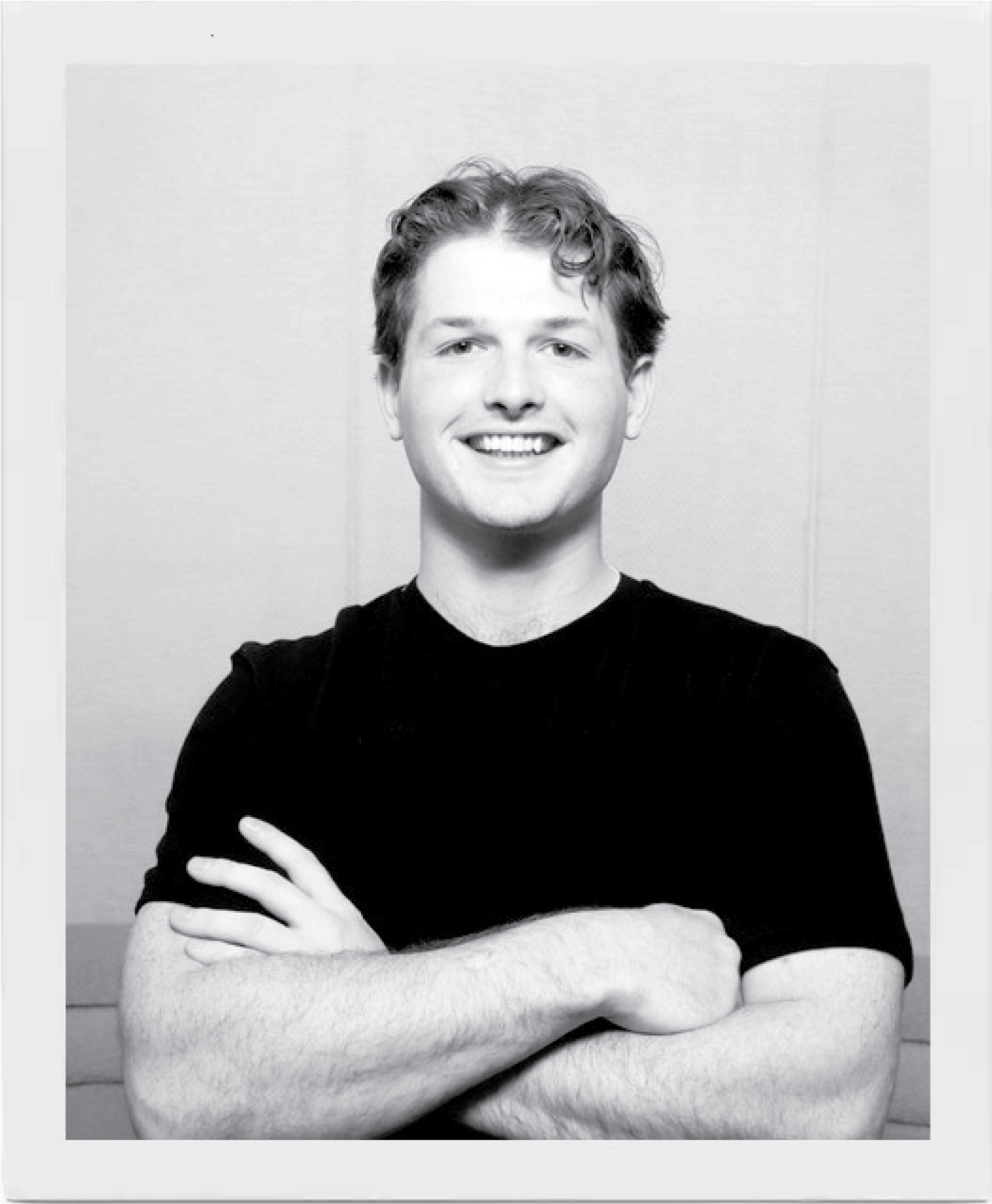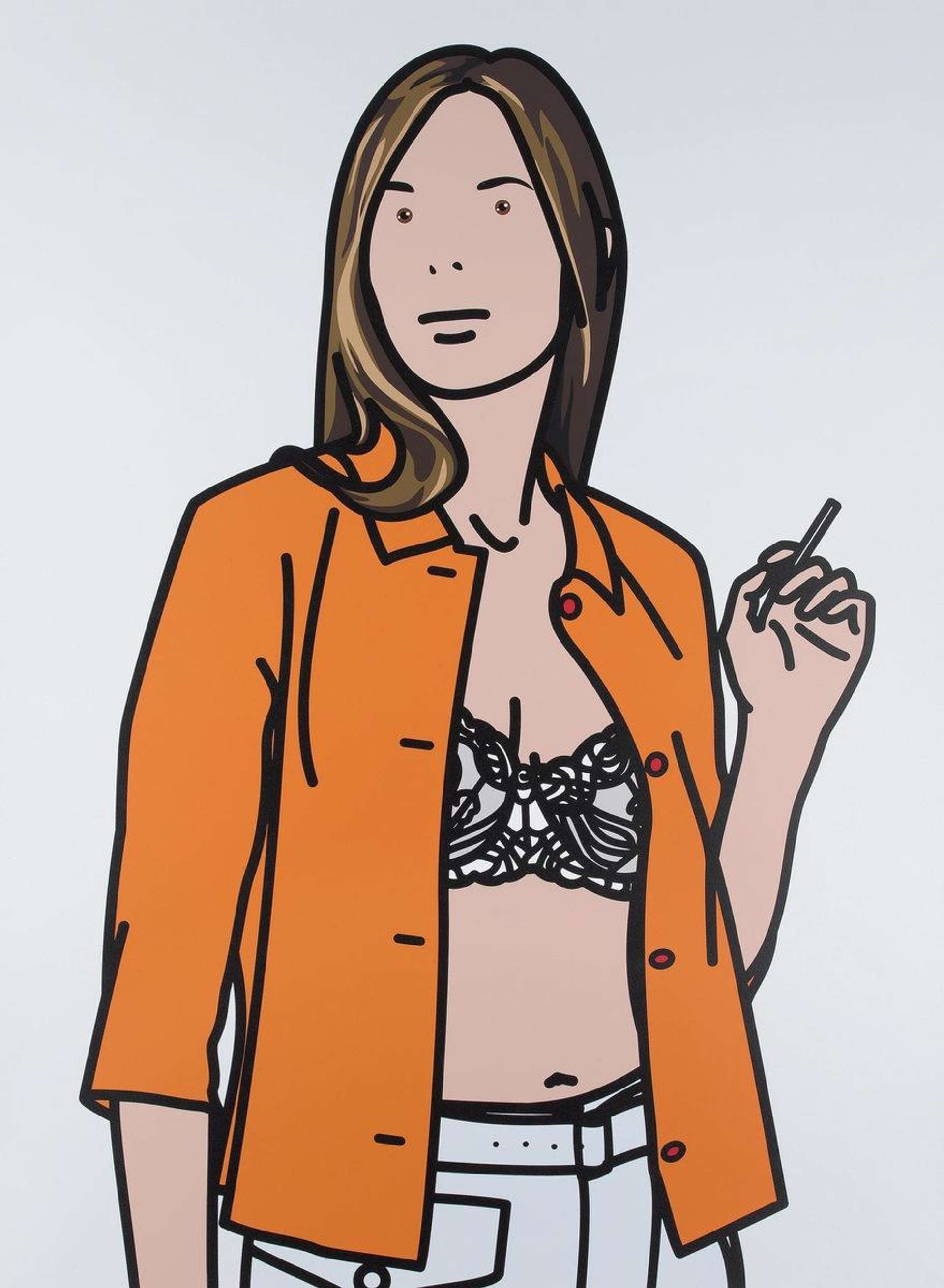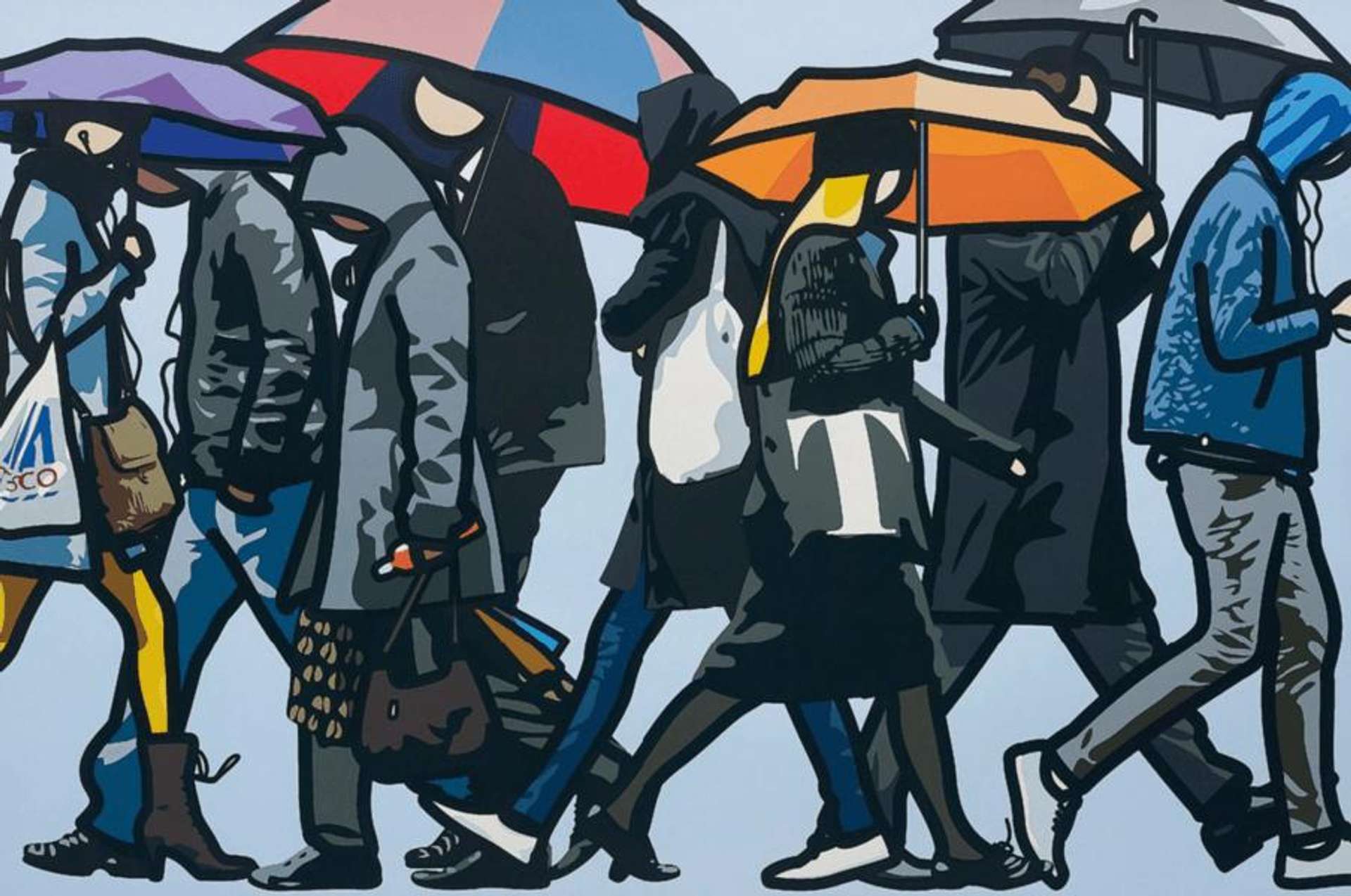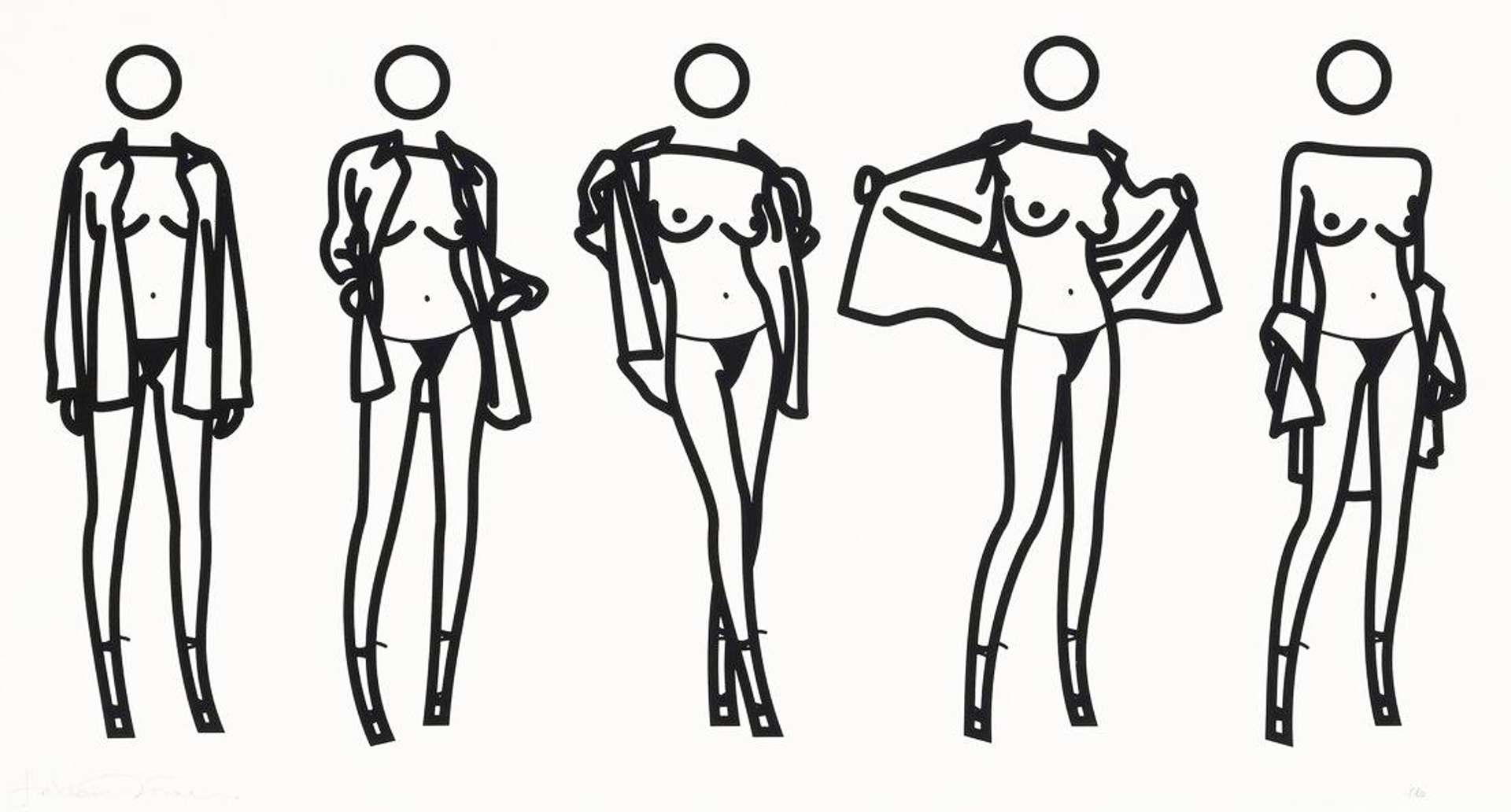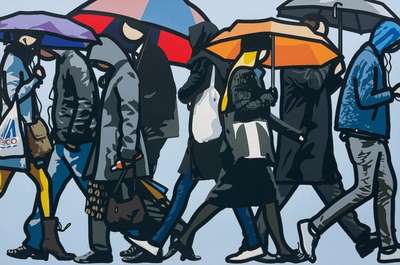 Twenty Six Portraits © Julian Opie 2006
Twenty Six Portraits © Julian Opie 2006Since emerging in the ’80s, Julian Opie has achieved critical and commercial success with work that is heavily inspired by the aesthetics of Pop Art and Minimalism. His figures can be seen on LCD screens, screen prints, canvases, and even t-shirts, around the world, and his artworks continue to be in demand from collectors.
If you’re thinking of selling a Julian Opie print or other work by the artist, we can help you navigate the market and ensure you get the best price at the right time. In this guide we look at recent results for the artist, the variables that play a part in determining value for his work and the various avenues we recommend for selling an artwork.
How much is my Opie print worth?
While some Julian Opie prints go for as little as £2,000, others can reach up to £50,000, and unique pieces can even go beyond that. According to auction stats from the last ten years, 47% of Opie’s works sold for $10,000–50,000 and 30% sold between $50,000–100,000. In terms of his contemporaries, this is comparable to artists such as Mel Bochner and Donald Sultan.
Many other factors affect the price of a work, however. This can range from the date the piece was made, the size of the edition, the popularity of the series and whether a piece has been signed or not.
Why sell now?
With a string of high profile public commissions under his belt, Julian Opie is one of the leading contemporary artists alive today. His work has been in steady demand on the primary and secondary market for a while now with prices for his work at auction rising significantly in the last three years – in 2019 his sales totalled at around $2.4million – the market for this artist is opening up again, after a small lull at the beginning of the decade, as younger generations are attracted to the clean and bright aesthetic of his work.
In recent years auction lots of Opie’s work have been selling consistently within or above their estimate range, proving the strength of the market for this artist right now.
Which Opie works are most in demand?
While Opie’s large full length nudes tend to command hundreds of thousands of pounds at auction, smaller versions of his signature figures also tend to perform well at auction and continue to be in demand from collectors worldwide. Opie’s Warhol-inspired portraits are also very popular thanks to the success of the artist’s award-winning album cover for Blur’s The Best Of in 2000 and his celebrated portrait of James Dyson, now hanging in the National Portrait Gallery. The artist has also produced a number of hypnotic video installations and lenticular prints which capture his figures in the movement of walking and bring life to the flatness of previous series. Other popular series depict women pole dancing or performing a striptease, while more recent work shows the artist turning to clothed figures, often in crowds, encapsulating the everyday realities of (pre-pandemic) city life.
How can I prove my Opie is authentic?
Where possible all artworks should be accompanied by a certificate of authentication or the relevant paperwork that traces the work back to the original seller, which should be the artist or the artist’s gallery. You may also find that a signed catalogue is included with a work to prove its exhibition and publication history as well as its authenticity. Works on screens can also have signed labels affixed to them. If the work was originally purchased through an auction house or trusted dealer there is no need for collectors to worry about a work’s authenticity as a specialist will have carried out due diligence checks before offering the piece for sale.
How can I ensure my piece is in good condition to sell?
It is usually the responsibility of the seller to ensure a condition check has taken place, but in case of any suspected damage, it’s best to ask an expert to advise and provide a condition report so the sale will be completely transparent.
Julian Opie’s prints vary from a handmade silkscreen or lithograph with unique colours on wove art paper, to a digital print on inkjet paper. Each medium will have its own specifications but generally it’s a good idea to consult a professional conservator or framer if you have concerns about a piece.
Read our guide to conserving your print correctly.
In order to ensure your investment is protected it’s best to keep prints and canvases away from direct sunlight with any works on paper kept behind UV-protective glass framing. Some collectors go as far as keeping their prints lying flat in a dark place in order to optimise value, however, art is made to be seen so inevitably some compromise will have to be made when it comes to displaying and preserving a piece.
Should I sell via auction or private sale?
When you’re ready to part with your Opie, it’s important to choose the right avenue for selling, whether it’s through an auction house, an online platform, or private sale.
We believe selling privately through a platform like MyArtBroker helps both buyers and sellers, which is why we do it. But there are advantages and disadvantages to all the methods. Deciding on the right platform will depend on your own level of confidence and expertise in the art market.
Selling via an auction house
If you decide to go with an auction house, they will appraise your work for free and help you set a reserve price. On the day of the auction, luck will play a significant role and you may be up against similar lots that have the potential to weaken the appeal of your piece. For prints, it’s rarely the most cost-effective way of reaching a buyer. You’ll also have to wait 2–3 months for a sale date and you’ll have to cover transport costs and the substantial fee – often up to 15% of the hammer price plus marketing fees.
Selling via an online auction
Many new sellers turn to public online platforms with a guaranteed large audience, such as eBay. These can offer huge audience exposure plus the ability to tailor your listing as you want, set rates for delivery, add a minimum price and more – all for a small commission fee.
There is, however, a greater risk of fraudulent buyers, time-wasters and crucially, less of your target collector audience. You’ll also be solely responsible for setting the value of your Opie and without the expertise.
Selling privately via a broker
Selling through a private brokerage can often be a good bet for a number of reasons. Private brokers give you access to a network of clients they know well and who will be interested in your Opie, without having to wait for a live auction to take place.
Private brokers can also help you with questions around authenticity, how to set realistic prices and supply potential buyers at a much more leisurely pace than the stress of an auction.
We offer to sell any work for free, 0% seller’s fees, no hidden costs. This is because we’re sure we’ll find you a buyer and that we’ll return you the market value for you work of art.
And finally…
Making the most of your investment comes down to understanding what you have for sale and its relative value in the current market. Julian Opie is a very popular artist, so if you are ready to sell a piece and cash in on your investment, do your homework, find the best market and present your art in the best possible way.
If you’d like any more advice on how to sell a work by Opie, just let us know. If you would like a valuation of your artwork ask today and hear from our team within 12 hours.
